#L.B. Jeffries
Photo
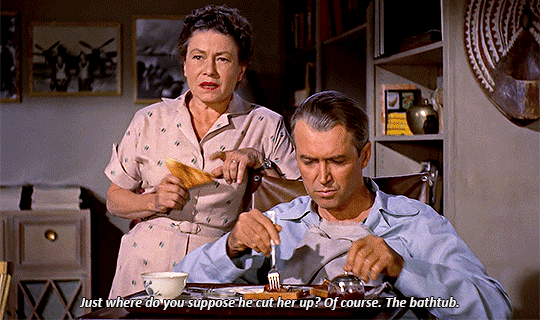

56 notes
·
View notes
Text

The 1954 theatrical release poster for Alfred Hitchcock’s Rear Window.
“Rear Window, American thriller film released in 1954, is considered one of Alfred Hitchcock’s most suspenseful movies. It starred Hitchcock favorites James Stewart and Grace Kelly.
Stewart played L.B. Jeffries, a photographer who is confined to a wheelchair while recuperating from a broken leg. He spends his days obsessively spying out his back window into the apartments of buildings behind him, getting to know his neighbors without ever meeting them. Gradually he becomes convinced that one neighbor (played by Raymond Burr) has murdered his wife. Jeffries is aided in his sleuthing by his girlfriend (Kelly) and his nurse (Thelma Ritter).”
-excerpt retrieved from Britannica
-
Stay cozy.
@soft-homestyle
#rear window#rear window 1954#jimmy stewart#james stewart#grace kelly#princess of monaco#princess grace#thelma ritter#alfred hitchcock#vintage friday#vintage#vintage hollywood#vintage celebrity#vintage film#classic movies#old hollywood#old hollywod glamour#black and white#1950s
23 notes
·
View notes
Text
Watcher

I’m back! Imagine if Miss Torso or Miss Lonelyhearts in REAR WINDOW (1954) realized they were being spied on, but not by L.B. Jeffries. Instead, Lars Thorwald had them in his crosshairs. That’s the starting point for Chloe Okuno’s WATCHER (2022, Shudder), her adaptation of a Zack Ford screenplay once on Hollywood’s Black List. One of Okuno’s biggest changes to the original is moving the action from Brooklyn to Bucharest, which amps up the paranoia. Julia (Maika Monroe) has given up her acting career to move there when her husband (Karl Glusman) is promoted to his marketing firm’s Romanian office. As if the isolation of knowing nobody but him and not speaking the language weren’t bad enough, she’s convinced the man across the courtyard is a serial killer spying on her. Okuno and cinematographer Benjamin Kirk Nielsen do a masterful job of isolating Monroe in space as the camera follows her around when she’s on her own. There’s a particularly tense sequence in which she goes into a movie theater to see CHARADE (1964), grateful to be hearing English again, only to have a man sit behind her in the near empty theatre and start leaning toward her. When she dashes out of the theater, he follows her into a supermarket, though the only proof it’s the same man is his shoes, which is all she could see in the theater. A lot of what happens in the film is expected. Okuno plants info you know will pay off at the end, but she wisely obscures the stalker’s face until he complains that Monroe is stalking him. There’s also a strong feminist slant. Even though she can’t speak the language, her husband has conversations in Romanian when a colleague comes over for dinner or they’re at a work party together. He has no problem leaving her alone while he works late or takes off on a business trip. And, of course, he doesn’t believe her. Monroe has to carry the film on her own for long stretches, often without dialog, and pulls it off very well. As the stalker she’s stalking, Burn Gorman delivers a chillingly understated performance. This is a very slow burn of a movie, but I think it’s well worth the effort. I was so wrapped up in it that when my Thanksgiving houseguests, who had turned in early, got up to shower, I almost jumped out of my seat.
3 notes
·
View notes
Photo
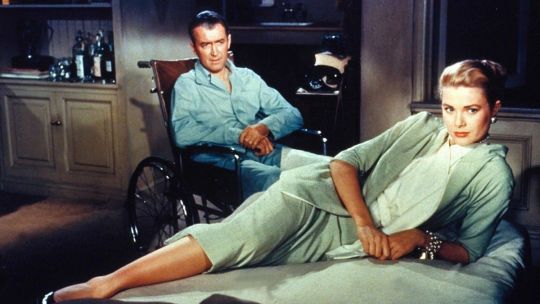
James Stewart and Grace Kelly in Rear Window (Alfred Hitchcock, 1954)
Cast: James Stewart, Grace Kelly, Wendell Corey, Thelma Ritter, Raymond Burr, Judith Evelyn, Ross Bagdasarian, Georgine Darcy, Sara Berner, Frank Cady, Jesslyn Fax, Rand Harper, Irene Winston, Havis Davenport. Screenplay: John Michael Hayes, based on a story by Cornell Woolrich. Cinematography: Robert Burks. Art direction: J. McMillan Johnson, Hal Pereira. Film editing: George Tomasini. Music: Franz Waxman.
An almost perfect movie. Rear Window has a solid framework provided by John Michael Hayes's screenplay, which has wit, sex, and suspense in all the right places and proportions. The action takes place in one of the greatest of all movie sets, designed by J. McMillan Johnson and Hal Pereira and filmed by Alfred Hitchcock's 12-time collaborator, Robert Burks. The jazzy score by Franz Waxman provides the right atmosphere, that of Greenwich Village in the 1950s, along with pop songs like "Mona Lisa" and "That's Amore" that come from other apartments and give a slyly ironic counterpoint to what L.B. Jefferies (James Stewart) sees going on in them. It has Stewart doing what he does best: not so much acting as reacting, letting us see on his face what he's thinking and feeling as as he witnesses the goings-on across the courtyard or the advances being made on him by Lisa Fremont (Grace Kelly) in his own apartment. It's also Kelly's sexiest performance, the one that makes us realize why she was Hitchcock's favorite cool blond. They get peerless support from Thelma Ritter as Jefferies's sardonic nurse, Wendell Corey as the skeptical police detective, and Raymond Burr as the hulking Lars Thorwald, not to mention the various performers whose lives we witness across the courtyard. It's a movie that shows what Hitchcock learned from his apprenticeship in the era of silent film: the ability to show rather than tell. In essence, what Jeffries is watching from his rear window is a set of silent movies. That Hitchcock is a master no one today doubts, but it's worth considering his particular achievement in this film: It contains a murder, two near-rapes, one near-suicide, serious threats to the lives of its protagonists, and the killing of a small dog, and yet it still retains its essential lightness of tone.
3 notes
·
View notes
Text
Assistir Filme Janela Indiscreta Online fácil
Assistir Filme Janela Indiscreta Online Fácil é só aqui: https://filmesonlinefacil.com/filme/janela-indiscreta/
Janela Indiscreta - Filmes Online Fácil
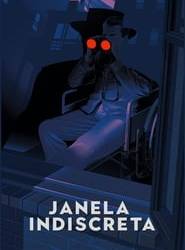
Em Greenwich Village, Nova York, L.B. Jeffries (James Stewart), um fotógrafo profissional, está de molho em seu apartamento por ter quebrado a perna enquanto trabalhava. Como não tem muito o que fazer, fica bisbilhotando a vida dos seus vizinhos com um binóculo. Porém vê algumas coisas que o fazem suspeitar que um assassinato foi cometido.
0 notes
Text
Janela Indiscreta - Filmes sobre Fotografia

https://youtu.be/fOVcjz-1aJM
"Janela Indiscreta" é um clássico filme de suspense dirigido por Alfred Hitchcock e lançado em 1958. A palavra "fotografia" desempenha um papel fundamental na narrativa do filme, contribuindo para sua atmosfera tensa e imersiva.
A história acompanha L.B. Jeffries, interpretado por James Stewart, um fotógrafo profissional confinado em seu apartamento devido a uma perna quebrada. Com sua mobilidade limitada, Jeffries passa os dias observando a vida dos seus vizinhos através da janela, usando sua câmera fotográfica como uma extensão de seus olhos curiosos.
A fotografia em "Janela Indiscreta" serve como uma metáfora para a ideia de observação e vigilância, explorando temas como voyeurismo e privacidade. Jeffries utiliza sua habilidade fotográfica para examinar a vida privada de seus vizinhos, tornando-se testemunha de um possível crime. Através da lente da câmera, a audiência é colocada na posição de cúmplice, compartilhando as descobertas e a tensão crescente junto com o protagonista.
A maneira como Hitchcock utiliza a fotografia no filme é excepcional. Através de enquadramentos cuidadosamente escolhidos, o diretor cria composições visualmente interessantes que fornecem pistas visuais e revelam informações sobre os personagens e suas histórias. A câmera se torna uma ferramenta para explorar não apenas a vida dos vizinhos de Jeffries, mas também sua própria psicologia, expressando sua crescente paranoia e medo.
Além disso, a iluminação meticulosa e o uso inteligente de sombras contribuem para a atmosfera de suspense do filme. A fotografia em preto e branco, típica da época, adiciona um elemento estético intemporal e acentua a sensação de mistério e intriga.
"Janela Indiscreta" é um exemplo notável de como a fotografia pode ser utilizada como um elemento narrativo poderoso no cinema. Ao explorar temas de observação, privacidade e suspense, o filme demonstra o impacto que uma imagem bem capturada e apresentada pode ter na construção de uma história envolvente.
Read the full article
0 notes
Text
Personally, I think L.B. Jeffries is a bit of a self-depreciating bitch and doesn’t realize how lucky he is to have a woman like Lisa Carol Fremont in his life until later in the film.
#rear window#l.b. jeffries#film alfred hitchcock#she's also portrayed by grace kelly#you got a hottie who loves you ya big doofus
0 notes
Photo

I re-watched one of my all-time personal favorite movies of all time Rear Window (1954) last week in connection with a Film Music Appreciation assignment (Franz Waxman’s [entirely diegetic] score is brilliant, gorgeous, and deserves way more credit than it gets).
I got on a bit of a Rear Window buzz afterwards and pulled out my white knee-length shorts and black V-neck t shirt (tucked in) as an homage to this costume (designed by Edith Head), which to my mind, is one of the most beautiful and iconic costumes in the history of film.
Someday (when I have a boyfriend!) I’d love to do a Rear Window couples costume. He could be Jimmy Stewart as L.B. Jeffries and I could dress in (tasteful) drag as Grace Kelly as Lisa Fremont and wheel him around all day! That seriously would be a dream come true someday. I’d have to do a lot of work: grow out my hair (but I ain’t dyin’ it) , shave my arms, legs, chest, and face meticulously, be able to walk in heels, wear earrings (clip on-s. Again, I’m not piercing my ears just for this), do makeup that doesn’t look like a four-year old put it on, and find/have someone make a replica of that exact dress. Not only would it be a challenging fun thing to do, but I would love to be comfortable enough to dress in (tasteful) drag as Grace Kelly. She’s so pretty.
#grace kelly#rear window#edith head#personal favorite films#jimmy stewart#franz waxman#lisa#lisa fremont#lisa carol fremont#l.b. jeffries#thelma ritter#tasteful drag#my fantasties#film#fashion
4 notes
·
View notes
Text
BLACK LIVES MATTER
A list with black artists who have a song in the Unknown Songs That Should Be Known-playlist
(Can be a black artist in a band or just solo-artist) (no specific genre)
Bull’s Eye - Blacknuss, Prince Prime - Funk
Aftershow - Joe Fox - Alternative Hip-hop
Strangers in the Night - Ben L’Oncle Soul - Soul
Explore - Mack Wilds - R&B
Something To Do - IGBO - Funk
Down With The Trumpets - Rizzle Kicks - Pop
Dans ta ville - Dub Inc. - Reggae
Dance or Die - Brooklyn Funk Essentials - Funk
FACELESS - The PLAYlist, Glenn Lewis - R&B
Tell Me Father - Jeangu Macrooy - Soul
Southern Boy - John The Conquerer - Blues Hard Rock
Savannah Grass - Kes - Dancehall
Dr. Funk - The Main Squeeze - Funk
Seems I’m Never Tired of Loving You - Lizz Wright - Jazz
Out of My Hands - TheColorGrey, Oddisee - Hip-Hop/Pop
Raised Up in Arkansas - Michael Burks - Blues
Black Times - Sean Kuti, Egypt 80, Carlos Santana - Afrobeat
Cornerstone - Benjamin Clementine - Indie
Shine On - R.I.O., Madcon - Electronic Pop
Bass On The Line - Bernie Worrell - Funk
When We Love - Jhené Aiko - R&B
Need Your Love - Curtis Harding - Soul
Too Dry to Cry - Willis Earl Beal - Folk
Your House - Steel Pulse - Reggae
Power - Moon Boots, Black Gatsby - Deep House
Vinyl Is My Bible - Brother Strut - Funk
Diamond - Izzy Biu - R&B
Elusive - blackwave., David Ngyah - Hip-hop
Don’t Ever Let Nobody Drag Your Spirit Down - Heritage Blues Orchestra - Blues
Sastanàqqàm - Tinariwen - Psychedelic Rock
Disco To Go - Brides of Funkenstein - Funk/Soul
Circles - Durand Jones & The Indications - Retro Pop
Cheesin’ - Cautious Clay, Remi Wolf, sophie meiers - R&B
Changes - Charles Bradley - Soul
The Sweetest Sin - RAEVE - House
Gyae Su - Pat Thomas, Kwashibu Area Band - Funk
What Am I to Do - Ezra Collective, Loyle Carner - Hip-hop
Get Your Groove On - Cedric Burnside - Blues
Old Enough To Know Better - Steffen Morrisson - Soul
Wassiye - Habib Koité - Khassonke musique
Dance Floor - Zapp - Funk
Wake Up - Brass Against, Sophia Urista - Brass Hard-Rock
BIG LOVE - Black Eyed Peas - Pop
The Greatest - Raleigh Ritchie - R&B
DYSFUNCTIONAL - KAYTRANADA, VanJess - Soul
See You Leave - RJD2, STS, Khari Mateen - Hip-hop
Sing A Simple Song - Maceo Parker - Jazz/Funk
Have Mercy - Eryn Allen Kane - Soul
Homenage - Brownout - Latin Funk
Can’t Sleep - Gary Clark Jr. - Blues Rock
Toast - Koffee - Dancehall
Freedom - Ester Dean - R&B
Iskaba - Wande Coal, DJ Tunez - Afropop
High Road - Anthony Riley - Alternative Christian
Sunny Days - Sabrina Starke - Soul
The Talking Fish - Ibibio Sound Machine - Funk
Paralyzed - KWAYE - Indie
Purple Heart Blvd - Sebastian Kole - Pop
WORSHIP - The Knocks, MNEK - Deep House
BMO - Ari Lennox - R&B
Promises - Myles Sanko - Soul
.img - Brother Theodore - Funk
Singing the Blues - Ruthie Foster, Meshell Ndegeocello - Blues
Nobody Like You - Amartey, SBMG, The Livingtons - Hip-hop
Starship - Afriquoi, Shabaka Hutchings, Moussa Dembele - Deep House
Lay My Troubles Down - Aaron Taylor - Funk
Bloodstream - Tokio Myers - Classic
Sticky - Ravyn Lenae - R&B
Why I Try - Jalen N’Gonda - Soul
Motivation - Benjamin Booker - Folk
quand c’est - Stromae - Pop
Let Me Down (Shy FX Remix) - Jorja Smith, Stormzy, SHY FX - Reggae
Funny - Gerald Levert - R&B
Salt in my Wounds - Shemekia Copeland - Blues
Our Love - Samm Henshaw - Soul
Make You Feel That Way - Blackalicious - Jazz Hip-hop
Knock Me Out - Vintage Trouble - Funk
Take the Time - Ronald Bruner, Jr., Thundercat - Alternative
Thru The Night - Phonte, Eric Roberson - R&B
Keep Marchin’ - Raphael Saadiq - Soul
Shake Me In Your Arms - Taj Mahal, Keb’ Mo’ - Blues
Meet Me In The Middle - Jodie Abascus - Pop
Raise Hell - Sir the Baptist, ChurchPpl - Gospel Pop
Mogoya - Oumou Sangaré - Wassoulou
Where’s Yesterday - Slakah The Beatchild - Hip-hop
Lose My Cool - Amber Mark - R&B
New Funk - Big Sam’s Funky Nation - Funk
I Got Love - Nate Dogg - Hip-hop
Nothing’s Real But Love - Rebecca Ferguson - Soul
Crazy Race - The RH Factor - Jazz
Spies Are Watching Me - Voilaaa, Sir Jean - Funk
The Leaders - Boka de Banjul - Afrobeat
Fast Lane - Rationale - House
Conundrum - Hak Baker - Folk
Don’t Make It Harder On Me - Chloe x Halle - R&B
Plastic Hamburgers - Fantastic Negrito - Hardrock
Beyond - Leon Bridges - Pop
God Knows - Dornik - Soul
Soleil de volt - Baloji - Afrofunk
Do You Remember - Darryl Williams, Michael Lington - Jazz
Get Back - McClenney - Alternative
Three Words - Aaron Marcellus - Soul
Spotify playlist
In memory of:
Aaron Bailey
Adam
Addie Mae Collins
Ahmaud Arbery
Aiyana Stanley Jones
Akai Gurley
Alberta Odell Jones
Alexia Christian
Alfonso Ferguson
Alteria Woods
Alton Sterling
Amadou Diallo
Amos Miller
Anarcha Westcott
Anton de Kom
Anthony Hill
Antonio Martin
Antronie Scott
Antwon Rose Jr.
Arthur St. Clair
Atatiana Jefferson
Aubrey Pollard
Aura Rosser
Bennie Simons
Berry Washington
Bert Dennis
Bettie Jones
Betsey
Billy Ray Davis
Bobby Russ
Botham Jean
Brandon Jones
Breffu
Brendon Glenn
Breonna Taylor
Bud Johnson
Bussa
Calin Roquemore
Calvin McDowell
Calvin Mike and his family
Carl Cooper
Carlos Carson
Carlotta Lucumi
Carol Denise McNair
Carol Jenkins
Carole Robertson
Charles Curry
Charles Ferguson
Charles Lewis
Charles Wright
Charly Leundeu Keunang
Chime Riley
Christian Taylor
Christopher Sheels
Claude Neal
Clementa Pickney
Clifford Glover
Clifton Walker
Clinton Briggs
Clinton R. Allen
Cordella Stevenson
Corey Carter
Corey Jones
Cynthia Marie Graham Hurd
Cynthia Wesley
Daniel L. Simmons
Danny Bryant
Darius Randell Robinson
Darius Tarver
Darrien Hunt
Darrius Stewart
David Felix
David Joseph
David McAtee
David Walker and his family
Deandre Brunston
Deborah Danner
Delano Herman Middleton
Demarcus Semer
Demetrius DuBose
Depayne Middleton-Doctor
Dion Johnson
Dominique Clayton
Dontre Hamilton
Dred Scott
Edmund Scott
Ejaz Choudry
Elbert Williams
Eleanor Bumpurs
Elias Clayton
Elijah McClain
Eliza Woods
Elizabeth Lawrence
Elliot Brooks
Ellis Hudson
Elmer Jackson
Elmore Bolling
Emantic Fitzgerald Bradford Jr.
Emmett Till
Eric Garner
Eric Harris
Eric Reason
Ernest Lacy
Ernest Thomas
Ervin Jones
Eugene Rice
Eugene Williams
Ethel Lee Lance
Ezell Ford
Felix Kumi
Frank Livingston
Frank Morris
Frank Smart
Frazier B. Baker
Fred Hampton
Fred Rochelle
Fred Temple
Freddie Carlos Gray Jr.
George Floyd
George Grant
George Junius Stinney Jr.
George Meadows
George Waddell
George Washington Lee
Gregory Gunn
Harriette Vyda Simms Moore
Harry Tyson Moore
Hazel “Hayes” Turner
Henry Ezekial Smith
Henry Lowery
Henry Ruffin
Henry Scott
Hosea W. Allen
India Kager
Isaac McGhie
Isadore Banks
Italia Marie Kelly
Jack Turner
Jamar Clark
Jamel Floyd
James Byrd Jr.
James Craig Anderson
James Earl Chaney
James Powell
James Ramseur
James Tolliver
James T. Scott
Janet Wilson
Jason Harrison
Javier Ambler
J.C. Farmer
Jemel Roberson
Jerame Reid
Jesse Thornton
Jessie Jefferson
Jim Eastman
Joe Nathan Roberts
John Cecil Jones
John Crawford III
John J. Gilbert
John Ruffin
John Taylor
Johnny Robinson
Jonathan Ferrell
Jonathan Sanders
Jordan Edwards
Joseph Mann
Julia Baker
Julius Jones
July Perry
Junior Prosper
Kalief Browder
Karvas Gamble Jr.
Keith Childress, Jr.
Kelly Gist
Kelso Benjamin Cochrane
Kendrick Johnson
Kenneth Chamberlain Sr.
Kenny Long
Kevin Hicks
Kevin Matthews
Kiwane Albert Carrington
Lacy Mitchell
Lamar Smith
Laquan McDonald
Laura Nelson
Laura Wood
L.B. Reed
L.D. Nelson
Lemuel Penn
Lemuel Walters
Leonard Deadwyler
Leroy Foley
Levi Harrington
Lila Bella Carter
Lloyd Clay
Louis Allen
Lucy
M.A. Santa Cruz
Maceo Snipes
Malcom X
Malice Green
Malissa Williams
Manuel Ellis
Marcus Deon Smith
Marcus Foster
Marielle Franco
Mark Clark
Maria
Martin Lee Anderson
Martin Luther King Jr.
Matthew Avery
Mary Dennis
Mary Turner
Matthew Ajibade
May Noyes
Mckenzie Adams
Medgar Wiley Evers
Michael Brown
Michael Donald
Michael Griffith
Michael Lee Marshall
Michael Lorenzo Dean
Michael Noel
Michael Sabbie
Michael Stewart
Michelle Cusseaux
Miles Hall
Moses Green
Mya Hall
Myra Thompson
Nathaniel Harris Pickett Jr.
Natasha McKenna
Nicey Brown
Nicholas Heyward Jr.
O’Day Short family
Orion Anderson
Oscar Grant III
Otis Newsom
Pamela Turner
Paterson Brown Jr.
Patrick Dorismond
Philando Castile
Phillip Pannell
Phillip White
Phinizee Summerour
Quaco
Ramarley Graham
Randy Nelson
Raymond Couser
Raymond Gunn
Regis Korchinski-Paquet
Rekia Boyd
Renisha McBride
Riah Milton
Robert Hicks
Robert Mallard
Robert Truett
Rodney King
Roe Nathan Roberts
Roger Malcolm and his wife
Roger Owensby Jr.
Ronell Foster
Roy Cyril Brooks
Rumain Brisbon
Ryan Matthew Smith
Sam Carter
Sam McFadden
Samuel DuBose
Samuel Ephesians Hammond Jr.
Samuel Hammond Jr.
Samuel Leamon Younge Jr.
Sandra Bland
Sean Bell
Shali Tilson
Sharonda Coleman-Singleton
Shukri Abdi
Simon Schuman
Slab Pitts
Stella Young
Stephon Clark
Susie Jackson
T.A. Allen
Tamir Rice
Tamla Horsford
Tanisha Anderson
Timothy Caughman
Timothy Hood
Timothy Russell
Timothy Stansbury Jr.
Timothy Thomas
Terrence Crutcher
Terrill Thomas
Tom Jones
Tom Moss
Tony McDade
Tony Terrell Robinson Jr.
Trayvon Martin
Troy Hodge
Troy Robinson
Tula
Tyler Gerth
Tyre King
Tywanza Sanders
Victor Duffy Jr.
Victor White III
Walter Lamar Scott
Wayne Arnold Jones
Wesley Thomas
Wilbert Cohen
Wilbur Bundley
Will Brown
Will Head
Will Stanley
Will Stewart
Will Thompson
Willie James Howard
Willie Johnson
Willie McCoy
Willie Palmer
Willie Turks
William Brooks
William Butler
William Daniels
William Fambro
William Green
William L. Chapman II
William Miller
William Pittman
Wyatt Outlaw
Yusef Kirriem Hawkins
The victims of LaLaurie (1830s)
The black victims of the Opelousas massacre (1868)
The black victims of the Thibodaux massacre (1887)
The black victims of the Wilmington insurrection (1898)
The black victims of the Johnson-Jeffries riots (1910)
The black victims of the Red summer (1919)
The black victims of the Elaine massacre (1919)
The black victims of the Ocoee massacre (1920)
The victims of the MOVE bombing (1985)
All the people who died during the Atlantic slave trade, be it due to abuse or disease.
All the unnamed victims of mass-incarceration, who were put into jail without the committing of a crime and died while in jail or died after due to mental illness.
All the unnamed victims of racial violence and discrimination.
...
My apologies for all the people missing on this list. Feel free to add more names and stories.
Listen, learn and read about discrimination, racism and black history: (feel free to add more)
Documentaries:
13th (Netflix)
The Innocence Files (Netflix)
Who Killed Malcolm X? (Netflix)
Time: The Kalief Browder Story (Netflix)
I Am Not Your Negro
YouTube videos:
We Cannot Stay Silent about George Floyd
Waarom ook Nederlanders de straat op gaan tegen racisme (Dutch)
Wit is ook een kleur (Dutch) (documentaire)
Books:
Biased by Jennifer Eberhardt
Don’t Touch My Hair by Emma Dabiri
Freedom Is A Constant Struggle by Angela Davis
How To Be An Anti-Racist by Ibram X. Kendi
I Know Why The Caged Bird Sings by Maya Angelou
Me and White Supremacy by Layla Saad
So You Want To Talk About Race by Ijeoma Oluo
They Can’t Kill Us All by Wesley Lowery
White Fragility by Robin Deangelo
Why I’m No Longer Talking To White People About Race by Reni Eddo-Lodge
Woman, Race and Class by Angela Davis
Websites:
https://lynchinginamerica.eji.org/report/
https://museumandmemorial.eji.org/
https://archive.org/details/thirtyyearsoflyn00nati/page/n11/mode/2up
https://lab.nos.nl/projects/slavernij/index-english.html
https://blacklivesmatter.com/
https://www.zinnedproject.org/
1K notes
·
View notes
Note
Motion to cast Linklater as Norman Bates......
I cannot refute. BUT. That's kinda just JT with bonus emphasis on the oedipal complex. I would also propose however that he would make a GREAT L.B. Jeffries from Rear Window should the prospect of a remake ever come up and no one can change my mind
#no shade nonnie you're right but my fave hitchcock film deserves rights too and NOW THAT YOU BRING IT UP#like it's hard to beat jimmy stewart but man... the man knows how to play in a space and honestly#thats a man who deserves grace kelly as his gf. I rest my case.#hamish linklater#also he's the only dude I can think of who could really ham up (heh) the whole wheelchair bound and in a cast thing#really stretching the comedy chops as well as the crime thriller detective shit. we love to see it
11 notes
·
View notes
Text
Top 250 Movies
the ultimate bucket list for the cineast
52. Rear Window (1954)
Directed by: Alfred Hitchcock

Synopsis: IT ONLY TAKES ONE WITNESS TO SPOIL THE PERFECT CRIME. - Professional photographer L.B. "Jeff" Jeffries breaks his leg while getting an action shot at an auto race. Confined to his New York apartment, he spends his time looking out of the rear window observing the neighbors. When he begins to suspect that a man across the courtyard may have murdered his wife, Jeff enlists the help of his high society fashion-consultant girlfriend and his visiting nurse to investigate.
comment: it was a bit boring at some points tbh (maybe the facts I started this at 1am didn't help). It was still a nice movie, I love the concept and I really like the setting and how it was shot
3.5/5 ☆
#rear window#rear window 1954#movie review#movies#mystery#top 250 movies. the ultimate bucket list for the cineast
2 notes
·
View notes
Photo


22 notes
·
View notes
Photo

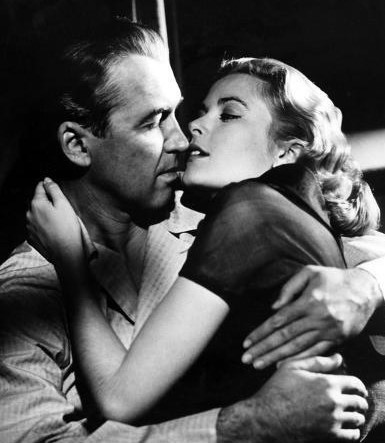
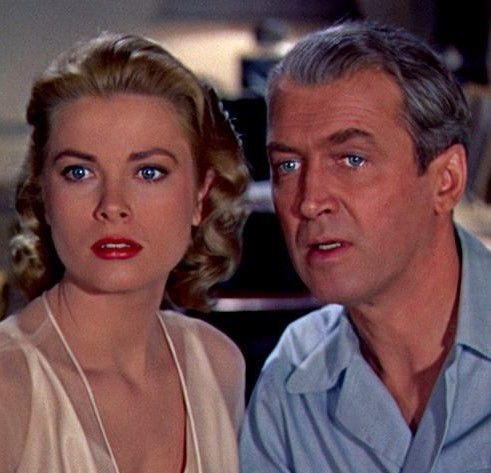
Characters: L.B. “Jeff” Jeffries and Lisa Carol Fremont
Media: Rear Window (1954)
Played by: James Stewart and Grace Kelly
Setting: 1950s, New York City
*~*~*~*~*~*~*~*~*~*~
#jeff x lisa#lisa x jeff#jeff jeffries#lb jeffries#lisa fremont#rear window#james stewart#grace kelly#1950s#new york#thriller#mystery#crime#star-crossed lovers#journalist#show business#caregiver#detective#age difference#disability#happy ending
4 notes
·
View notes
Photo

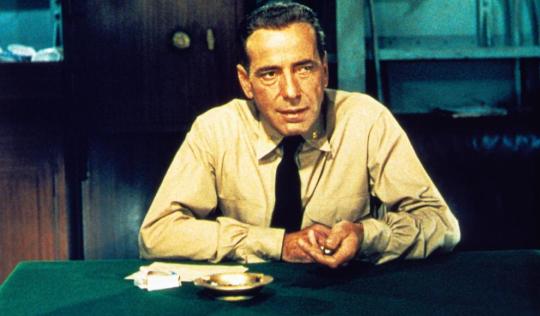







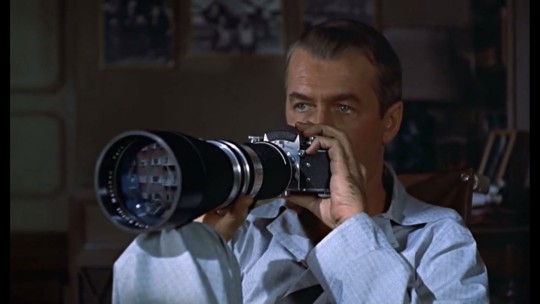
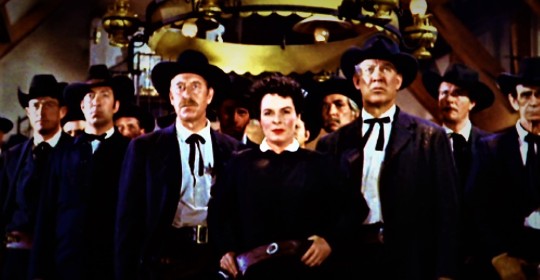
Some Great Movie Characters - Part 2
the 1950s
Captain Queeg (Humphery Bogart), The Caine Mutiny (1954), Rose Sayer (Katherine Hepburn), The African Queen (1951), Juror #8 (Henry Fonda), 12 Angry Men (1957), Madeleine Elster/Judy Barton (Kim Novak), Vertigo (1958), Colonel Dax (kirk Douglas), Paths of Glory (1957), Maggie (Elizabeth Taylor), Cat on a Hot Tin Roof (1958), Klaatu (Michael Rennie), The Day the Earth Stood Still (1951), Blanche DuBois (Vivien Leigh), A Streetcar Named Desire (1951), L.B. “Jeff” Jeffries (Jimmy Stewart), Rear Window (1954), Emma Smalls (Mercedes McCambridge), Johnny Guitar (1954),
(below) Police Captain Hank Quinlan (Orson Welles), Touch of Evil (1958)

16 notes
·
View notes
Photo


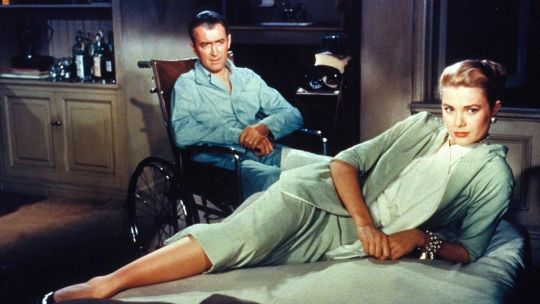






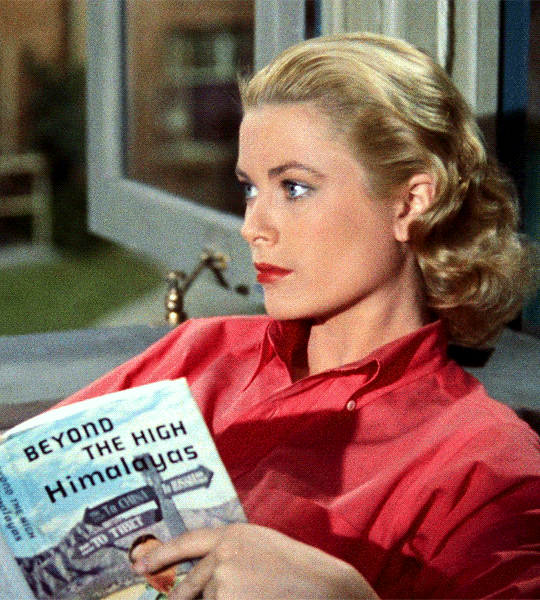
Rear Window (Alfred Hitchcock, 1954)
Cast: James Stewart, Grace Kelly, Thelma Ritter, Wendell Corey, Raymond Burr, Judith Evelyn, Ross Bagdasarian, Georgine Darcy, Sara Berner, Frank Cady, Jesslyn Fax, Rand Harper, Irene Winston, Havis Davenport. Screenplay: John Michael Hayes, based on a story by Cornell Woolrich. Cinematography: Robert Burks. Art direction: J. McMillan Johnson, Hal Pereira. Film editing: George Tomasini. Music: Franz Waxman.
An almost perfect movie. Rear Window has a solid framework provided by John Michael Hayes's screenplay, which has wit, sex, and suspense in all the right places and proportions. The action takes place in one of the greatest of all movie sets, designed by J. McMillan Johnson and Hal Pereira and filmed by Alfred Hitchcock's 12-time collaborator, Robert Burks. The jazzy score by Franz Waxman provides the right atmosphere, that of Greenwich Village in the 1950s, along with pop songs like "Mona Lisa" and "That's Amore" that come from other apartments and give a slyly ironic counterpoint to what L.B. Jefferies (James Stewart) sees going on in them. It has Stewart doing what he does best: not so much acting as reacting, letting us see on his face what he's thinking and feeling as as he witnesses the goings-on across the courtyard or the advances being made on him by Lisa Fremont (Grace Kelly) in his own apartment. It's also Kelly's sexiest performance, the one that makes us realize why she was Hitchcock's favorite cool blond. They get peerless support from Thelma Ritter as Jefferies's sardonic nurse, Wendell Corey as the skeptical police detective, and Raymond Burr as the hulking Lars Thorwald, not to mention the various performers whose lives we witness across the courtyard. It's a movie that shows what Hitchcock learned from his apprenticeship in the era of silent film: the ability to show rather than tell. In essence, what Jeffries is watching from his rear window is a set of silent movies. That Hitchcock is a master no one today doubts, but it's worth considering his particular achievement in this film: It contains a murder, two near-rapes, one near-suicide, serious threats to the lives of its protagonists, and the killing of a small dog, and yet it still retains its essential lightness of tone.
gifs from clairefrasers
0 notes
Text
Final: Alfred Hitchcock
Alfred Hitchcock was an English film director, producer, and screenwriter. He was considered the “Master of Suspense” and some of his most well known films include Rear Window (1954), Vertigo (1958), North by Northwest (1959), and Psycho (1960). I will be mainly focusing on Hitchcock’s 1954 film, Rear Window. Although Hitchcock moved to Hollywood at the beginning of his career, many mannerisms in his films come from his roots in London, England.
His career began in London, when Paramount Pictures was just opening a studio there. He worked as a co-writer, art director, and production manager for over a dozen silent films. Hitchcock then moved to Gainsborough Pictures in Germany after Paramount had pulled from London. He worked on minor films there, until he moved to Hollywood in 1939, where he completed several films throughout and after the time of World War Two. The most successful years of his career ranged from 1954 to 1964. His films following this period were known, but not entirely successful. In his late life, he was knighted in 1980, and due to his health declining, passed away a few months later. Hitchcock distributed his films in Hollywood through various production companies such as Warner Brothers, and in the instance of Rear Window, Paramount Pictures. His filming techniques were unique, to compel the audience to experience the film as if they were immersed in the story. In the case of Rear Window, many of the shots in the film involved the camera panning across the screen, through the eyes of the main character.
Rear Window was nominated for multiple Oscars in 1954, including best cinematography, best writing (screenplay), best sound, and Alfred Hitchcok was nominated for best director for the film. But, to the surprise of everyone, did not receive any of those awards, only the nominations. Alfred Hitchcock did not write the film from scratch; he had an inspiration - a short story, The short story was titled “It Had To Be Murder” and was written by Cornell Woolrich as part of Dime Detective, in February of 1942. It runs an hour and fifty two minutes, and takes up twelve reels of film. Despite being filmed in the early 1950’s, the film was shot completely in color. Alfred Hitchcock was actually enthralled in the writing process, sometimes more than filming itself, because that’s when all of the great “lightbulb” ideas happen. In an interview with Hitchcock himself, he describes why he loves the writing process so much. He states:
“The most enjoyable part of making a picture is in that little office, with the writer, when we are discussing the story-lines and what we’re going to put on the screen. The big difference is that I do not let the writer go off on his own and just write a script that I will interpret. I stay involved with him and get him involved in the direction of the picture. So he becomes more than a writer; he becomes part maker of the picture.”
The film itself revolves around L.B. “Jeff” Jeffries, a New York magazine photographer stuck in his home during the summer due to a broken leg. To pass the time, he sits in his wheelchair and stares out of his apartment window at his neighbors. He is visited by his nurse, Stella, who disapproves of his spying, and his girlfriend, Lisa, who is a model. His neighbors all have personas created by Jeff, such as Miss Lonely Hearts, who often entertains an imaginary dinner date. Miss Torso was a dancer, juggling between three men. There was a traveling salesman, living with his bed-ridden wife, and a struggling composer that plays the piano. Jeff does more observing, and after a few suspicious events happen in his neighborhood, he believes that the salesman, Lars Thorwald, murdered his wife. After numerous attempts to find clues leading to Thorwald being guilty, tension builds as the audience wonders what will happen next (and no… I will not be spoiling the end of the film).
One of the most intriguing parts about Rear Window is the fact that Jeff has the ability to observe much more clearly in his apartment than he would if he were out and about. Observation was one of the main themes of the film, because without slowing down, nobody picked up on anything that Jeff did. Alfred Hitchcock’s repertoire of mystery thrillers is vast, but in my opinion, the scariest part of this film is the fact that sometimes it doesn’t take deep investigation, but observation. Imagine how much people would be able to learn just from stopping and looking around themselves.
In terms of technique, Alfred Hitchcock wanted to capture the film through the eyes of the main character. Typically, he would use the camera to show what the main character was looking at, as if it were through their own perspective. Another popular technique that Hitchcock used was creating montages during his films, including a series of close up shots that were right in the actors and actresses faces. He would use cameras to almost pan around a character to capture every detail about them. For example, the opening scene of Rear Window includes shots of each person’s apartment, panning from one neighbor to the next. It would cross through each apartment, as if someone were looking around (using his own technique of creating a character's perspective) and then swing around to reveal Jeff. The camera followed Jeff’s leg starting from the foot and led all the way up past his wheelchair right up to his face.
Another interesting part about Alfred HItchcock’s films were his decisions when casting. A lot of times, he would work with one or two actors and use them in multiple of his films. He would initially grow a personal relationship with the people he was filming and directing, and then after growing fond of them, he would want to use them in another work of his. However, as much as he might have favored them and used them in his films, he didn’t necessarily think highly of them. There was one instance where he actually referred to his actors and actresses as cattle, because they needed a lot of direction. He tried to hire people that were easily manipulable, and could be as much of a blank slate as possible when working with him. That way, he could turn them into the characters as closely as possible, rather than interpreting the characters a certain way and acting in a way that Hitchcock didn’t like. Something interesting about his casting was that he almost always cast blonde females in his work. Even though it’s a completely ridiculous thing to think, he believed that blondes appeared less suspicious than brunettes did. For that same reason, when a blonde does something deceitful or unexpected, he thought it was a greater shock than when someone with dark-colored hair did the same exact thing. Although this is completely untrue, he believed this and it heavily impacted his casting for all of his films, just to increase the amount of suspense or shock that he wanted to capture for the audience.
In this particular film, L.B. Jeffries was played by James Stewart, better known as Jimmy Stewart. He was in multiple Hitchcock films, including Vertigo, The Man Who Knew Too Much, and Rope. But, one of his most famous films that he was in is still regularly watched during the Christmas season - It’s a Wonderful Life. Lisa is played by Grace Kelly, who was also in To Catch a Thief, Dial M for Murder, and Terror in the Aisles, all creted by Hitchcock. Stella, the nurse, is played by Thelma Ritter. Despite being a famous actor during the time, this was the only film that she was cast in directed by Alfred Hitchcock. As you can see, there is a pattern as to whom Alfred Hitchcock wanted to work with. Rear Window is only a small inside look to how often Alfred HItchcock actually used the same actors and actresses in numerous films of his.
Alfred Hitchcock focused some of his films on the idea of voyeurism, which is the desire or behavior to observe people. Typically this would be used in the context of spying on people undressing or being naked, but this wasn’t the particular case in Rear Window, as Jeff was just spying on all of his neighbors in general. Voyeurism is a global issue, often seen in criminals who are either stalkers or pedophiles. Although Jeff’s instance is not nearly at this level, in the modern world we live in, it is a problem that unsuspecting people have endured. Voyeurism can be seen in a handful of Hitchcock’s films, but is the most apparent in this film. Jeff’s ability to “spy” on people provides him with entertainment while being held up in his home until his broken leg heals. Through this, he finds some satisfaction in finding out information about his neighbors that other people normally wouldn’t pick up on. However, there is some controversy as to whether Jeff is doing something illegal by spying on his neighbors or if he is simply observing his neighbors in the sense that he is a photographer looking for inspiration. The central idea of voyeurism in this instance isn’t to give Jeff pleasure, it’s to satisfy himself in being able to create his own entertainment.
Overall, I highly recommend this classic mystery-thriller to anyone that enjoys watching films. It takes you through a journey of emotions, between the collection of drama and suspense during the film. Alfred Hitchcock created an incredible, spine-tingling repertoire of work, but I believe that Rear Window was a breakthrough, beginning the peak of his career and exemplifying the themes of some of his most popular work.
VIDEOS:
https://youtu.be/m01YktiEZCw
https://youtu.be/j9lZRDAoecs
SOURCES:
Teachout, Terry. “The Trouble With Alfred Hitchcock.” Commentary, vol. 127, no. 2, Feb. 2009, pp. 43–46. EBSCOhost, search.ebscohost.com.libserv-prd.bridgew.edu/login.aspx?direct=true&db=lfh&AN=37360095&site=eds-live.
Lawrence Howe. “Through the Looking Glass: Reflexivity, Reciprocality, and Defenestration in Hitchcock’s ‘Rear Window.’” College Literature, vol. 35, no. 1, Jan. 2008, pp. 16–37. EBSCOhost, search.ebscohost.com.libserv-prd.bridgew.edu/login.aspx?direct=true&db=edsjsr&AN=edsjsr.25115476&site=eds-live.
DeRosa, Steven. “Writing with Hitchcock: John Michael Hayes and the Making of Rear Window.” Worcester Review, vol. 38, no. 1/2, Jan. 2017, pp. 110–120. EBSCOhost, search.ebscohost.com.libserv-prd.bridgew.edu/login.aspx?direct=true&db=lfh&AN=134934180&site=eds-live.
“Rear Window.” (1954) - Turner Classic Movies, Turner Classic Movies, 1 Jan. 1970, www.tcm.com/tcmdb/title/87777/rear-window/#overview.
Mikulec, Sven. “'Rear Window': Hitchcock's Cinematic Exploration of Voyeurism Disguised as a Top-Notch Thriller • Cinephilia & Beyond.” Cinephilia & Beyond, 12 Nov. 2020, cinephiliabeyond.org/rear-window-hitchcocks-cinematic-exploration-voyeurism-disguised-top-notch-thriller/.
North, David. “Voyeurism and Subjective Understanding in ‘Rear Window.’” University of Chicago Philosophy Review, 17 Apr. 2019, ucpr.blog/2018/12/13/voyeurism-and-subjective-understanding-in-rear-window/comment-page-1/.
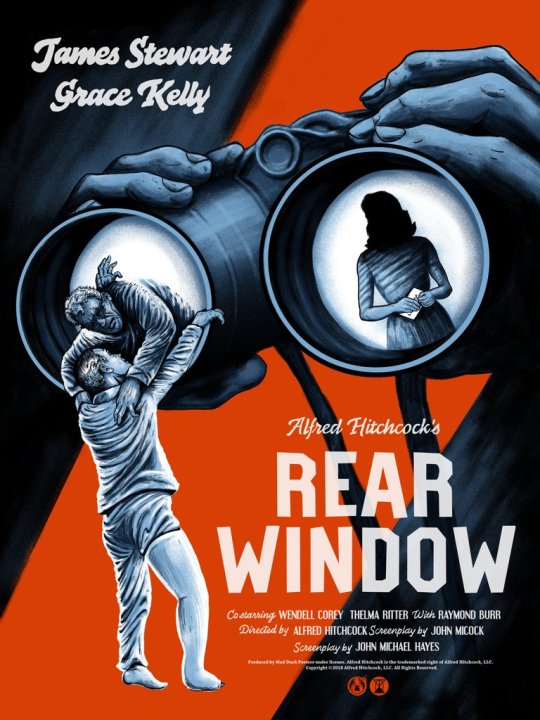



1 note
·
View note